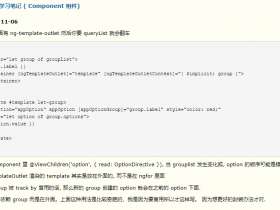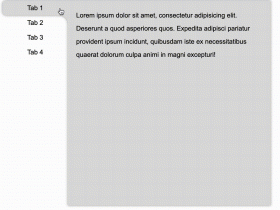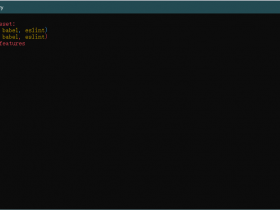- A+
组件注册
前言
在 Vue.js 中,除了它内置的组件如 keep-alive、component、transition、transition-group 等,其它用户自定义组件在使用前必须注册。在开发过程中可能会遇到如下报错信息:
Unknown custom element: <app> - did you register the component correctly? For recursive components, make sure to provide the "name" option. 一般报这个错的原因都是我们使用了未注册的组件。Vue.js 提供了 2 种组件的注册方式,全局注册和局部注册。接下来我们从源码分析的角度来分析这两种注册方式。
全局注册
在初始化加载阶段会调用initAssetRegisters函数把需要注册的组件挂载到Vue.options上。
// srccoreglobal-apiindex.js initAssetRegisters(Vue) // srccoreglobal-apiassets.js export function initAssetRegisters (Vue: GlobalAPI) { // 标注① ASSET_TYPES.forEach(type => { Vue[type] = function ( id: string, definition: Function | Object ): Function | Object | void { if (!definition) { return this.options[type + 's'][id] } else { /* istanbul ignore if */ if (process.env.NODE_ENV !== 'production' && type === 'component') { validateComponentName(id) } if (type === 'component' && isPlainObject(definition)) { // 优先拿name,没有则取id definition.name = definition.name || id // 标注② definition = this.options._base.extend(definition) } if (type === 'directive' && typeof definition === 'function') { definition = { bind: definition, update: definition } } this.options[type + 's'][id] = definition return definition } } }) } 标注①:
对ASSET_TYPES进行遍历,我们先看看遍历对象ASSET_TYPES是什么?
// srcsharedconstants.js export const ASSET_TYPES = [ 'component', 'directive', 'filter' ] 其实就是存放着插件、指令、过滤器这三个分类名称的数组,这里我们只单独针对component进行分析。
标注②:
this.options._base其实是Vue,具体原因请查看之前的文章《组件的创建和patch过程》。
通过Vue.extend把对象转换成构造器。
最后把definition放到this.options即Vue.options上,然后return definition。
虽然挂载到Vue.options上,但是又是什么时候会被拿去注册成真正的组件呢?
我们回顾_createElement函数:
// srccorevdomcreate-element.js export function _createElement ( context: Component, tag?: string | Class<Component> | Function | Object, data?: VNodeData, children?: any, normalizationType?: number ): VNode | Array<VNode> { ... if (typeof tag === 'string') { //是否HTML原生标签 if (config.isReservedTag(tag)) { ... // 标注①:resolveAsset } else if ((!data || !data.pre) && isDef(Ctor = resolveAsset(context.$options, 'components', tag))) { // component vnode = createComponent(Ctor, data, context, children, tag) } else { ... } } } 标注①:resolveAsset函数做了什么?
// srccoreutiloptions.js export function resolveAsset ( options: Object, type: string, id: string, warnMissing?: boolean ): any { /* istanbul ignore if */ if (typeof id !== 'string') { return } const assets = options[type] //判断配置中是否存在该组件 if (hasOwn(assets, id)) return assets[id] const camelizedId = camelize(id) //id转换成驼峰型判断 if (hasOwn(assets, camelizedId)) return assets[camelizedId] const PascalCaseId = capitalize(camelizedId) //id转换成首字母大写判断 if (hasOwn(assets, PascalCaseId)) return assets[PascalCaseId] // fallback to prototype chain // 原型上面找 const res = assets[id] || assets[camelizedId] || assets[PascalCaseId] if (process.env.NODE_ENV !== 'production' && warnMissing && !res) { warn( 'Failed to resolve ' + type.slice(0, -1) + ': ' + id, options ) } //返回构造器 return res } 其实就是经过各种情况判断识别Vue.options是否有定义该组件,有的话则返回,然后最后经过createComponent函数进行了组件的注册。
局部注册
局部注册其实和全局注册的几乎一样,只是它需要在此前做一个option合并:
// srccoreglobal-apiextend.js Sub.options = mergeOptions( Super.options, extendOptions ) 关于合并的详细分析请查阅之前文章《合并配置》
由于合并配置是挂载于Sub上的,也就是说它只是一个在当前Sub作用域下的,一次这种创建方式的组件只能局部使用。




